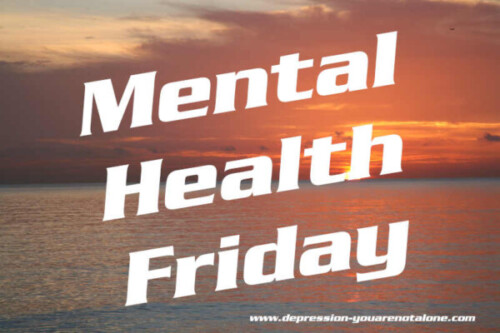Mental Health Friday 2023-01-12
On Mental Health Friday, we post, in alphabetical order, one per week, information on mental health disorders. Mental Health Friday is for informational purposes only, and is in no way meant to diagnose, treat or cure any disease. Please do not self diagnose and seek professional help for what ails you.
Link: FindTreatment.gov is an online source of information for persons seeking substance use and/or mental health treatment facilities in the United States or U.S. Territories.
.
Panic Disorder
Editorial Team
Panic Disorder is a type of anxiety disorder characterized by recurrent and unexpected panic attacks. These episodes of intense fear are often accompanied by physical and cognitive symptoms, creating a profound sense of terror and apprehension. Here are detailed aspects of Panic Disorder:
1. Panic Attacks:
- Definition: Panic attacks are the hallmark feature of Panic Disorder. They are sudden and intense periods of fear and discomfort that reach a peak within minutes.
- Symptoms: Physical symptoms include heart palpitations, sweating, trembling, shortness of breath, chest pain, nausea, dizziness, and a feeling of impending doom.
2. Frequency and Duration:
- Recurrence: Panic Disorder involves recurrent, unexpected panic attacks. The fear of experiencing another attack can lead to anticipatory anxiety.
- Duration: The disorder persists over time, often for at least six months.
3. Anticipatory Anxiety:
- Definition: Individuals with Panic Disorder often develop a heightened sense of anxiety between panic attacks, fearing the possibility of future episodes.
- Impact: This anticipatory anxiety can significantly affect daily life, leading to avoidance behaviors and negatively impacting one’s quality of life.
4. Avoidance Behaviors:
- Coping Mechanism: To prevent panic attacks, individuals may avoid situations or places they associate with previous attacks.
- Impact: Avoidance can severely limit daily activities, impairing social, occupational, and interpersonal functioning.
5. Diagnostic Criteria:
- DSM-5 Criteria: According to the Diagnostic and Statistical Manual of Mental Disorders (DSM-5), specific criteria, including the presence of recurrent panic attacks and persistent concern about future attacks, must be met for a diagnosis of Panic Disorder.
6. Co-Occurring Conditions:
- Depression: Panic Disorder often coexists with depression and other anxiety disorders.
- Agoraphobia: In some cases, individuals may develop agoraphobia, an intense fear of being in places or situations where escape might be difficult or embarrassing.
7. Biological and Environmental Factors:
- Genetics: There’s evidence suggesting a genetic predisposition to Panic Disorder.
- Neurotransmitters: Imbalances in neurotransmitters, particularly serotonin and norepinephrine, are believed to contribute.
- Stressful Life Events: Traumatic experiences or high-stress situations may trigger the onset of Panic Disorder.
8. Treatment Options:
- Psychotherapy: Cognitive-Behavioral Therapy (CBT) is particularly effective in addressing panic attacks and modifying associated thought patterns.
- Medication: Antidepressants, benzodiazepines, and beta-blockers may be prescribed to alleviate symptoms.
- Combination Therapy: A combination of psychotherapy and medication is often recommended for comprehensive treatment.
9. Prognosis:
- Chronicity: Panic Disorder can be a chronic condition, but with appropriate treatment, many individuals experience significant improvement.
- Relapse Prevention: Long-term management may involve continued therapy, support groups, and learning effective coping strategies.
10. Seeking Help:
- Professional Assistance: If someone suspects they have Panic Disorder, consulting with a mental health professional is crucial for accurate diagnosis and tailored treatment.
Understanding Panic Disorder involves recognizing its symptoms, underlying causes, and the impact it can have on an individual’s life. Seeking appropriate treatment is essential for managing and mitigating the effects of this anxiety disorder.

